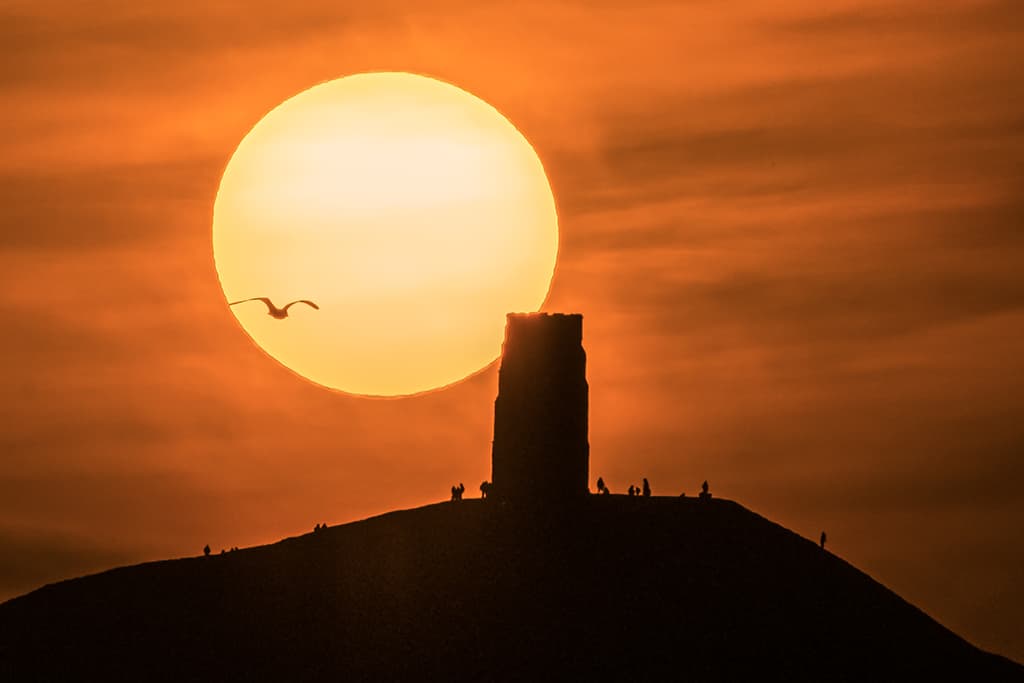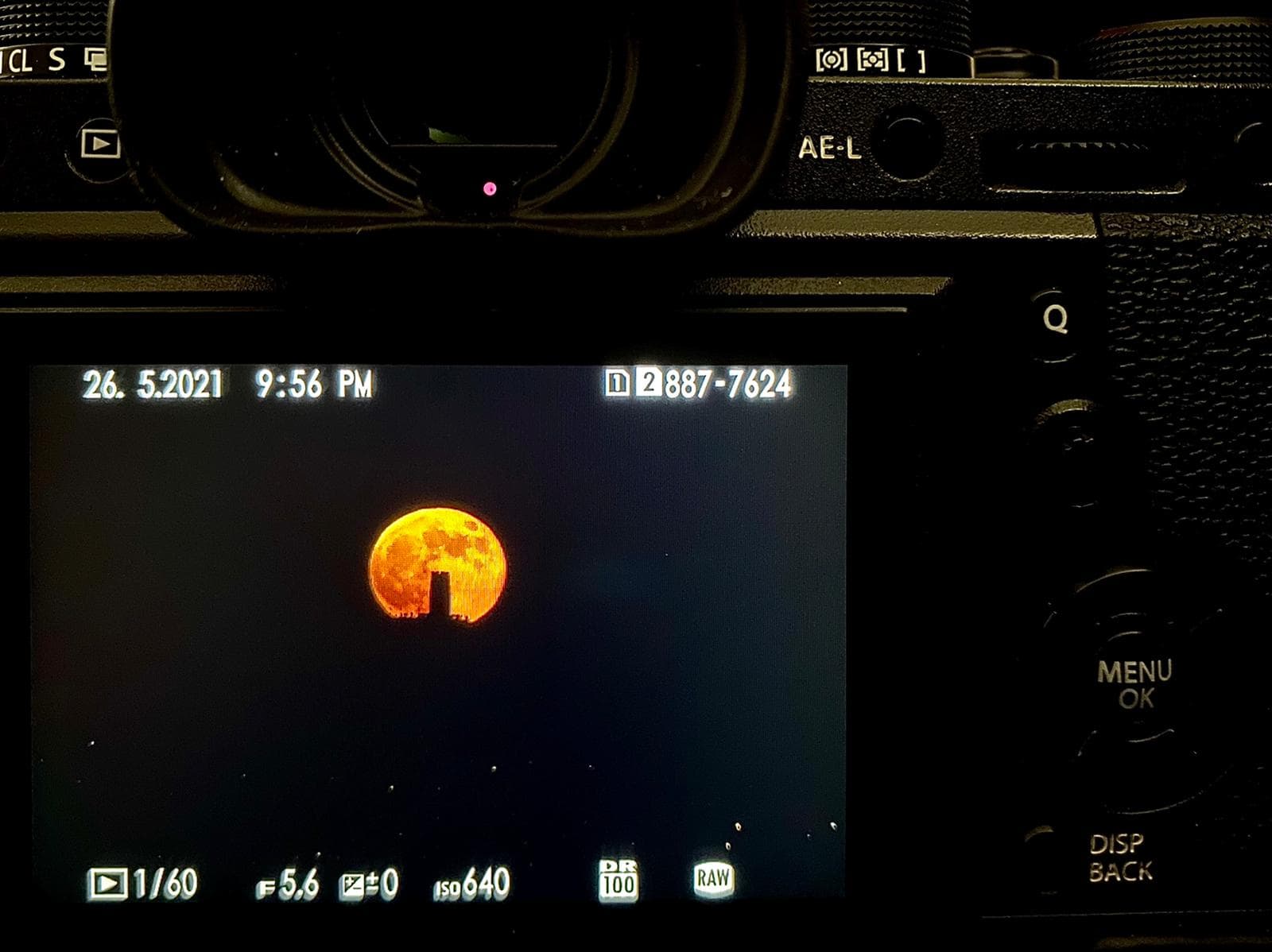At the end of May, Deborah Richards got her stunning image of a supermoon rising behind Glastonbury Tor featured in The Times. With the next supermoon set to rise on June 24th, we found out how she did it – and how anyone can get images featured in the papers if they are prepared to do the legwork

The shot that made The Times: f/5/6, 1/60 sec, ISO 640, 400mm focal length
What gear did you use?
A Fujifilm X-T2 body and the Fujinon XF 100-400mm f/4.5-5.6 R LM OIS WR lens. You can pick up the X-T2 second hand for a great price now, but it’s far from being a cheap and nasty camera. I also used a Sirui tripod with a ballhead and a remote shutter release.

The shot took a lot of planning, we guess?
Absolutely. I use the PhotoPills app to work out the line where the moon is going to rise at a particular time. About two weeks before, I will start planning the shot.
Once I have the line of where the moon is going to rise, I do a recce of the area and find the best possible location. A bit higher up is good, as you will get the supermoon earlier… also the further away you are, the bigger the moon will appear behind the Tor or any other suitable landmark.
So you can’t just turn up on the night and hope to find a great spot, and shoot handheld. You can do a handheld moon rise shot but will be at a different time of year when you have got a lot of light. When it gets darker, you need to be there at least 30 minutes before the moon rises to line everything up

Another of Deborah’s supermoon shots from the night
How did you find the best location to shoot from?
I won’t give away the exact location as I respect the privacy of the landowner. But I will say this. You need to build up a rapport with locals rather than heading to the same spot as everyone else. I am never scared to approach people and ask permission to go into their fields – you can’t just assume access as there might not be any public footpaths, for example.
If you build up a relationship with the landowner, they will welcome you back year after year. Often I thank the landowner with a print, and with this supermoon shot, I gave them a framed print – it’s a good selling point if they ever sell the farmhouse!
Was the exposure a challenge?
The lighting conditions can change quickly so first of all, you have to ensure there is minimum movement on the camera as you are so far away.
For this particular shot I was SIX miles away from the Tor, so you have to be really careful. When you have moving people standing on the Tor from this distance, you have to work carefully to keep everything sharp.
As I use a tripod, I turn off image stabilisation on the lens to remove the risk of even the slightest bit of softness and work out the ISO when I am there. You need to let some light in, as in this case, the moon didn’t rise until 10pm. With the moon so bright and the surroundings so dark, it’s quite an exposure challenge.
What about editing?
I did the minimum, really, just converting the raw image to JPEG. A lot of people online question whether this kind of image is a Photoshop ‘fake’. I won’t argue, but show the sequence of images and also share an image of the back of the camera (below), which reveals the general location, the time and even exposure settings.

Picture agencies don’t usually accept Photoshopped images anyway, they want genuine images straight out of the camera.

How exactly did you get the picture in The Times?
I use the Apex agency. Anyone can sign up, and it’s worth sending in anything you think is interesting. As mentioned, the agencies are interested in news, they don’t want Photoshop creations, and they want something different. Not many photographers caught the supermoon that big that night, and from that distance.

Any other tips?
You can’t just keep going back to your favourite location. The moon will rise in different locations at different times of year. You have to persevere and keep trying to find good spots – I am local to Somerset, but still, I have made friends with a lot of farmers!
At the end of the day (pardon the pun), this is quite a simple shot. Never be afraid to ask for help from other photographers, but be mindful who you ask, and don’t expect people to always share locations. Never be discouraged, and learn from your mistakes.
Also you need to know your camera inside out. When the moon starts rising, you have a few minutes to nail the shot and might need to move your tripod around, so I tend to use a manual shutter release rather than messing around with apps. To get the moon perfectly lined up behind a landmark you have to be quick, and be able to refocus quickly in the dark without adding even the tiniest bit of camera shake.
The last Supermoon of 2021 will occur on June 24 and will be a Super Strawberry Moon. Go for it!

About Deborah Richards
Deborah is a very experienced portrait, landscape and fine-art photographer based in Somerset. A keen Fujifilm user, she strives “to connect to something unseen and through photography, capture something that evokes emotion, the very thing that we suppress and that lays compressed behind all that may present to us and surround us.” For more, including image sales, see her website here







